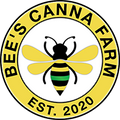Cannabinoids Found in Breast Milk
When most people hear the word cannabinoids, they immediately think of cannabis. But the truth is, cannabinoids exist both in the human body and in plants.
- Endogenous cannabinoids (endocannabinoids) are produced naturally within the body, playing vital roles in a wide range of physiological and cognitive processes.
- Exogenous cannabinoids, found in plants like cannabis, can mimic our body’s own cannabinoids. They fit into the same receptors—CB1, CB2, and possibly the newly identified CB3 (a G-protein-coupled receptor)—like a lock and key.
This remarkable overlap means plant-derived cannabinoids can influence the body on a cellular level, supporting functions such as cellular homeostasis, neurotransmission, neurodevelopment, immune response, pain perception, mood, appetite, sleep, + more.
So what about cannabinoids in breast milk?
The Role of Cannabinoids in Feeding
Researchers at Louisiana State University (LSU) discovered that breast milk contains endocannabinoids—especially 2-
Breast milk is far more than simple nutrition. It contains bioactive compounds, including endocannabinoid-like molecules, that help regulate development and the need to feed (1). Specifically, 2-AG in breast milk activates the oral-motor muscles necessary for suckling, ensuring infants can feed effectively (1). This process not only sustains the newborn but also reinforces the crucial maternal-infant bond.
The CB1 Knockout Mouse Study
To test the importance of endocannabinoids, researchers studied CB1 knockout mice—genetically modified mice lacking CB1 receptors, the primary site where 2-AG binds (2). The results were striking: these mice showed no desire to feed, leading to death.
This finding underscores two key points:
- Endocannabinoids in breast milk are essential for the infant feeding response.
- The endocannabinoid system (ECS) is a critical regulator of survival behaviors, including feeding.
Why This Matters Beyond Infancy
The discovery that our bodies depend on endocannabinoids from the very start of life highlights the fundamental importance of the ECS.
What makes this even more exciting is that plant-derived cannabinoids can mimic our natural endocannabinoids, offering a way to influence essential functions at a cellular level. This opens the door to potential therapeutic applications—a form of biological “hacking” using safe, plant-based compounds.
We are only beginning to uncover the vast medical potential of cannabinoid science. One plant, with seemingly endless potential. Now, that’s what I call medicine!
Bee Well,
Brandon Farless
*This information is for educational purposes only and I am sharing educational information pertaining to these studies. No medical advice or claims are being made on my behalf.
References
1. LSU. (2018b, July 1). https://repository.lsu.edu/
2. Wiley, J. L., Burston, J. J., Leggett, D. C., Alekseeva, O. O., Razdan, R. K., Mahadevan, A., & Martin, B. R. (2005). CB1 cannabinoid receptor-mediated modulation of food intake in mice. British journal of pharmacology, 145(3), 293–300. https://doi.org/10.1038/sj.






